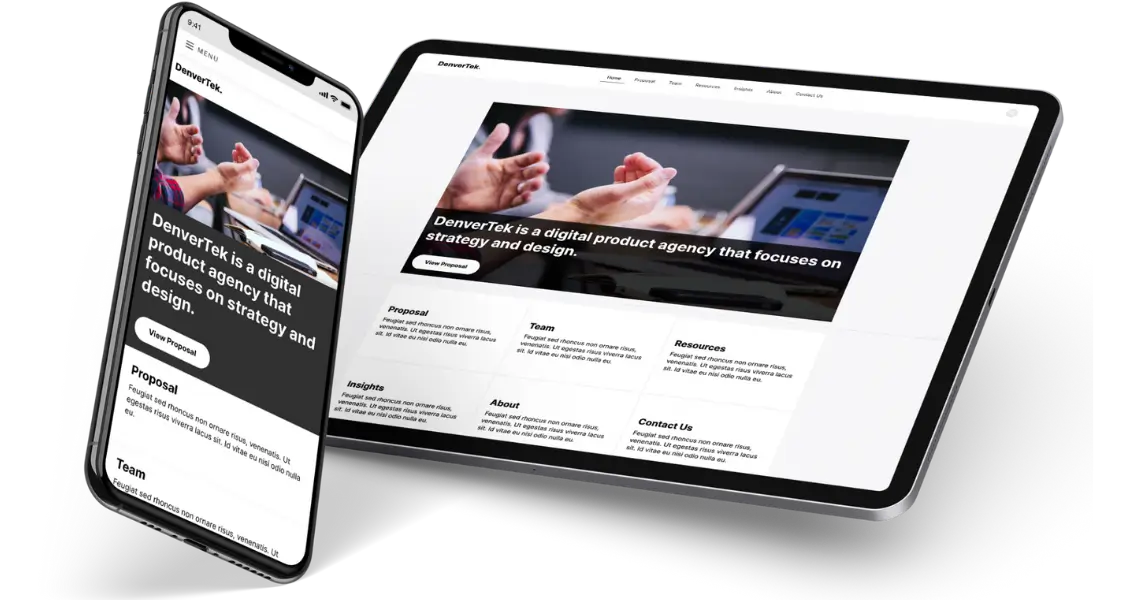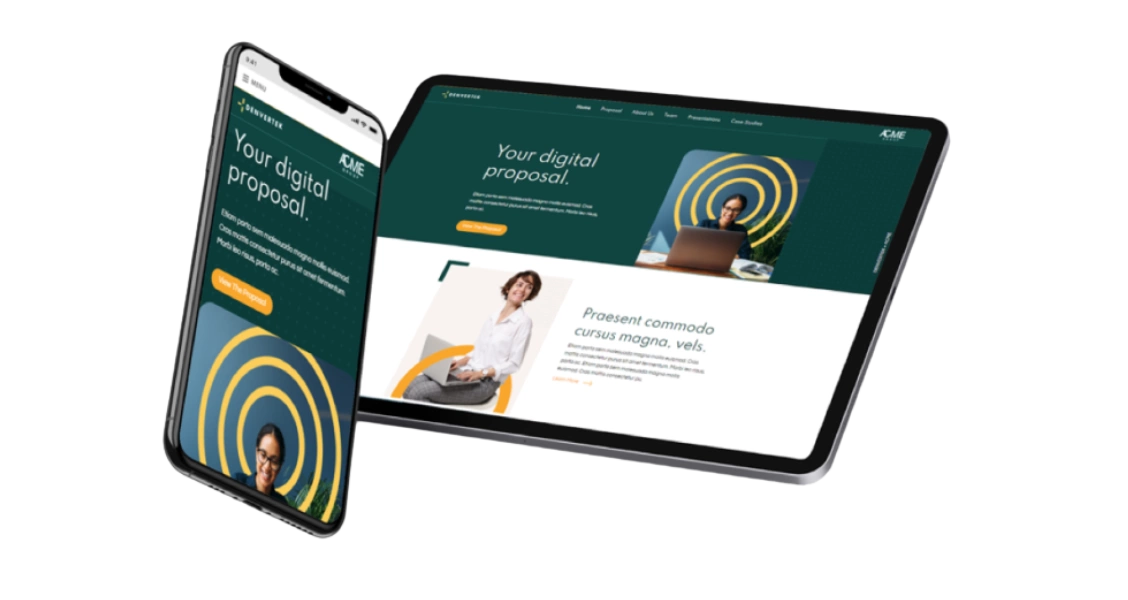Requests for proposals (RFPs) can be terrific ongoing sources of business for companies — especially those capable of landing government contracts or work at scale.
RFPs get sent out for everything from construction projects to professional service contracts —such as for the provision of accounting, consultancy, or legal services.
Because RFPs can represent lucrative and ongoing sources of work, many firms have a well-defined RFP response process along with dedicated bid / pursuit teams whose responsibility it is to enter RFP responses. As with many activities, consistency is key. Firms that can really master the RFP response process and stick with it for the long haul can give themselves a leg-up in responding to RFPs and actually securing contracts.
Some good news; microsites are ideal vehicles to communicate your response to an RFP. RFPs are weighty but require responses that are highly personalized and well thought out – without being boring.
To kick off our series on using microsites for RFP response processes, here are 6 RFP process best practices that could shift your win rate in the right direction.
1. Always, always personalize your RFP responses
There’s an open secret among those writing RFP responses: it’s virtually impossible to customize an RFP response from cover to cover.
Businesses develop boilerplate “about us” sections for a reason: because it’s easier to get it right once than have to describe yourself every time you’re responding to RFPs. Even large RFP writing teams don’t generally do it all from a blank page.
If you’re sending out multiple RFP responses every week, then it’s inevitable that you’re going to have to rely on some cookie-cutter “filler” material. Zoomforth makes it easy to do just that thanks to its RFP response template offering.
That being said, a successful RFP response is more than just filling in a template.
You’re expected to engage seriously with the spec listed in the RFP and demonstrate how your firm could help the RFP-sender address the professional challenges they’re experiencing. That’s not the kind of thing you can copy and paste.
2. Go all out on the multimedia content when responding to RFPs
If you’re reading this post, then you’re probably already using microsites to send RFP responses or are thinking that it’s time to use something that can spruce up your current file-based request for proposal response format.
Nobody has PDFs as their RFP response format of choice. In fact, no one enjoys reading reams of text whether in PDF or some other format. That goes for those who are evaluating your bid responses too. Make their job as interesting as possible by injecting a bit of variety into what can otherwise feel like a very staid format:
- Embed videos to show what your team could do on a personal level. Just remember to keep them short (three minutes is a common recommendation, but if you really want to show what you can do, we think it could be stretched to five).
- Consider adding audio or embedded presentations if you think that your target audience is likely to engage with content presented in those formats.
3. Anchor your pricing at a sustainable level in your response to RFPs
Negotiation coaches will tell you that anchoring is a vitally important part of negotiations.
The first number either party throws out tends to be given disproportionate weight by both buyer and seller.
Virtually all RFP responses are going to require some “brass tacks.” So whether you’re providing a simple bid or throwing out a range, make sure that you put some decent consideration into whatever figure you get behind.
While it’s of course always possible to negotiate upwards or downwards from that initial figure, you’re likely to face some resistance. Getting the bid even approximately right the first time is a much more successful approach.
Some concrete recommendations:
- If there are things that you can’t do for the price, then spell those out
- Even if you think that the scope of your offer is obvious, likewise, it’s also sensible to be specific and let the other party know exactly what’s included
- Don’t just think about what bid is going to work for you now. Consider what’s going to be a viable rate for you throughout the duration of the envisioned commercial relationship
4. Be sure to check out some winning RFP response examples
Even if you’re convinced that you’ve got an amazing idea for how to truly nail an RFP response, it’s a good idea to draw upon outside inspiration.
Where can you find examples of RFP responses?
- The Zoomfroth blog: we’ll be sharing some of the best practices we’ve seen clients do to encapsulate RFP responses in microsites. Watch this space!
- The Zoomforth gallery: We have some examples layouts for those of you that want to use microsites as part of your RFP response
- Google. Search for terms like ‘template RFP response’ and see what comes up. It’s best to look for RFPs from your industry or something comparable.
- If you’re networked with some RFP writers, you could ask them to share some of their top tips
Casting a wide net when it comes to RFP responses is a good idea. There are many winning RFP response examples out there that could give you some great tips for how to leverage rich content, like a video for example.
5. Optimize your request for proposal response format for skimming
We asked a seasoned reader of RFP responses what he thought businesses should be doing better when it comes to authoring compelling RFP responses.
His answer: make them more skimmable.
When bidding on business potentially worth multiple millions of dollars, there’s a tendency for authors to equate length with seriousness. In other words, RFP authors want to write lots of text in the hope of furthering an impression that they’re really serious about winning the business.
But too often this actually makes the bid responses far less attractive for readers.
So here are some ideas instead:
- Break up long stretches of text by shortening paragraphs. This is a standard recommendation for online writing – or any type of writing likely to be viewed on a screen. But we think it bears repetition.
- Divide pages with plenty of headings and sub-headings to make it easier for readers to skim through.
- Create a great navigation menu that lays out the highlights of your response as logically as possible. For some tips on how to create excellent menu navigations, check out our post on the subject here.
6. Visuals add a nice touch to any response to a request for proposal
With Zoomforth, you can embed all kinds of visuals, from images and video to interactive graphics and news feeds.
If you’re trying to find a way to show some bar charts in a more attractive manner, then you don’t necessarily need a designer on staff. We love Canva and so do many of our clients.
Any time you’re trying to present statistical information to show bottom-line figures, consider whether that information could be displayed more efficiently in the format of a bar chart, pie chart, or as a table.

To deliver bid responses that really stand a chance of making a difference, it’s time to get creative about how you put them together. By using Zoomforth to upgrade file-based bids to microsite-based ones, you’ve already taken the first step. Your next job: make the very most out of our tool to maximize your hit rate.
Want to learn more? Request a demo now.



